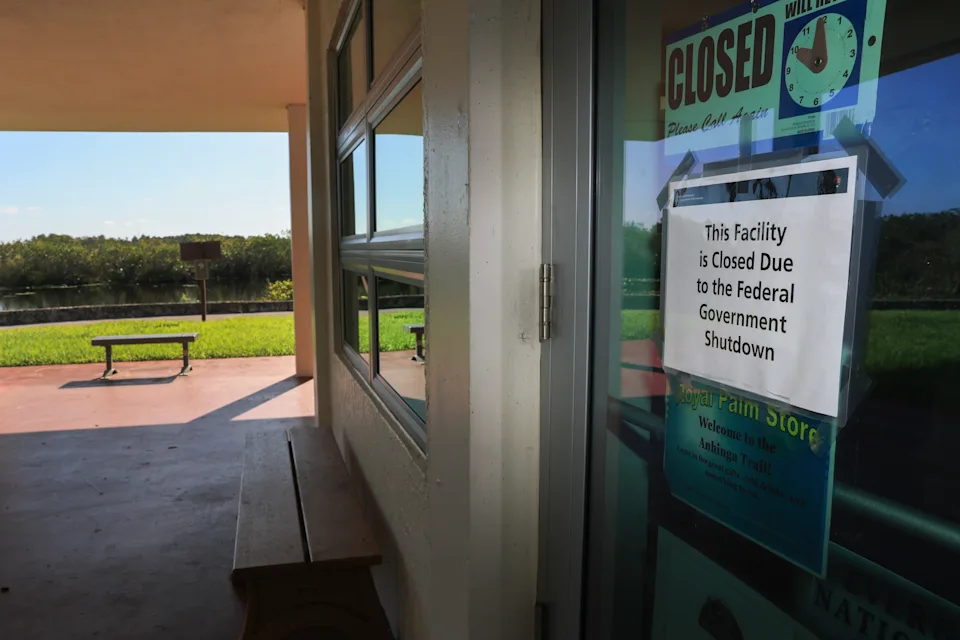The federal government might be shut down, but President Trump is making every effort not to let that slow down his economic agenda.
The president’s economic priorities that aren’t directly related to the stoppage won’t be interrupted, as administration-authored shutdown contingency plans allow for tariff rollouts to continue and a $20 billion bailout for Argentina to remain intact.
The White House also appears set to use the funding shortfall as an opportunity to expand Trump’s imprint, with the president promising to use expanded powers in a shutdown to potentially fire government workers or even cut programs.
That nascent effort is already being likened to the Department of Government Efficiency formerly led by Elon Musk, with many affixing the moniker “DOGE 2.0” this time around.
It’s part of a White House effort that could grow more ambitious the longer a shutdown lasts. And for now, no end is in immediate sight.
On Wednesday afternoon, another round of votes saw US senators fail to advance competing plans to fund the government — for the second time in as many days.
“A lot of good can come down from shutdowns,” Trump offered Tuesday evening as the deadline loomed, adding, “We can get rid of a lot of things that we didn’t want, and they’d be Democrat things.”
And indeed, the early moves appear to be in line with that focus.
Trump budget chief Russell Vought announced Wednesday a hold on roughly $18 billion in infrastructure funding for New York City, followed by the cancellation of nearly $8 billion in green energy money to blue states.
The shutdown wasn’t directly mentioned in either post, but the consequences for talks were immediately evident, especially with the first move pausing federal money in the home city of both Sen. Chuck Schumer and Rep. Hakeem Jeffries.
Schumer quickly slammed that move as “stupid and counterproductive.”
Efforts around tariffs and global finance
On the issue of tariffs, Trump’s team is making clear that the work of setting up future duties isn’t stopping.
After all, the Commerce Department’s shutdown contingency plan states that “the necessary work to address the effect of imported articles on national security” will continue.
This is an effort related to investigations in progress under Section 232 of the Trade Expansion Act, which mandates months of procedures before new tariffs can be imposed.
Keeping these investigations rolling is a shift from previous shutdown plans and means that 10 active Section 232 investigations by Trump’s team will continue.
That will eventually mean tariffs on goods from critical minerals to semiconductors may be rolled out according to previously set deadlines.
The president is also implementing tariffs this week, with new 100% duties on a slice of pharmaceutical products and 25% tariffs on heavy trucks taking effect on Oct. 1. Those will be followed on Oct. 14 by duties on timber and various wood products.
Overseas negotiations also aren’t slowing down.
Treasury Secretary Scott Bessent recently announced a plan to provide more than $20 billion in a currency swap to Argentina in an attempt to prop up the troubled — but very Trump-friendly — administration of President Javier Milei.
There are critics. Rohit Chopra, director of the Consumer Financial Protection Bureau under former President Joe Biden, was one of the first to highlight a Treasury contingency plan that appears set to allow the US government to proceed with a payment.
Chopra calls it an “inappropriate bailout” and notes, even as things like the release of economic data will cease, that money for Argentina “will be deemed an essential function of government.”
‘Cutting programs’
Trump’s plan not to slow down during the shutdown has some historical precedents. A Washington maxim once articulated by Rahm Emanuel is to never let a “crisis go to waste.”
But current White House signals suggest that efforts this time around could push both political and legal boundaries to their limits, especially when it comes to the federal workforce.
In recent days, the president has outlined plans to both fire workers and make cuts to programs that “are irreversible.”
On Wednesday, Vice President JD Vance added that no final decisions on layoffs had been made but plans were in the works that could be unveiled soon.
The effort is already leading to litigation, with two major unions representing government employees filing a lawsuit alleging that a pre-shutdown threat to fire workers “is an unlawful abuse of power designed to punish workers and pressure Congress.”
The Democratic response so far has similarly been to call it nothing more than an intimidation tactic. The left-leaning Center for American Progress released an analysis finding that a shutdown provides no justification for making permanent layoffs, which it says is backed by recent guidance from the government’s Office of Personnel Management.
Either way, the move has already unsettled the federal workforce and could lead to economic ripples, depending on the specifics of how budget director Russell Vought — who is in charge of the effort, alongside his infrastructure funding move Wednesday — proceeds.
Either way, the ambitions are clear, with one White House official putting a fine point on it to The Atlantic, telling the magazine that Vought will do “what DOGE couldn’t do.”

